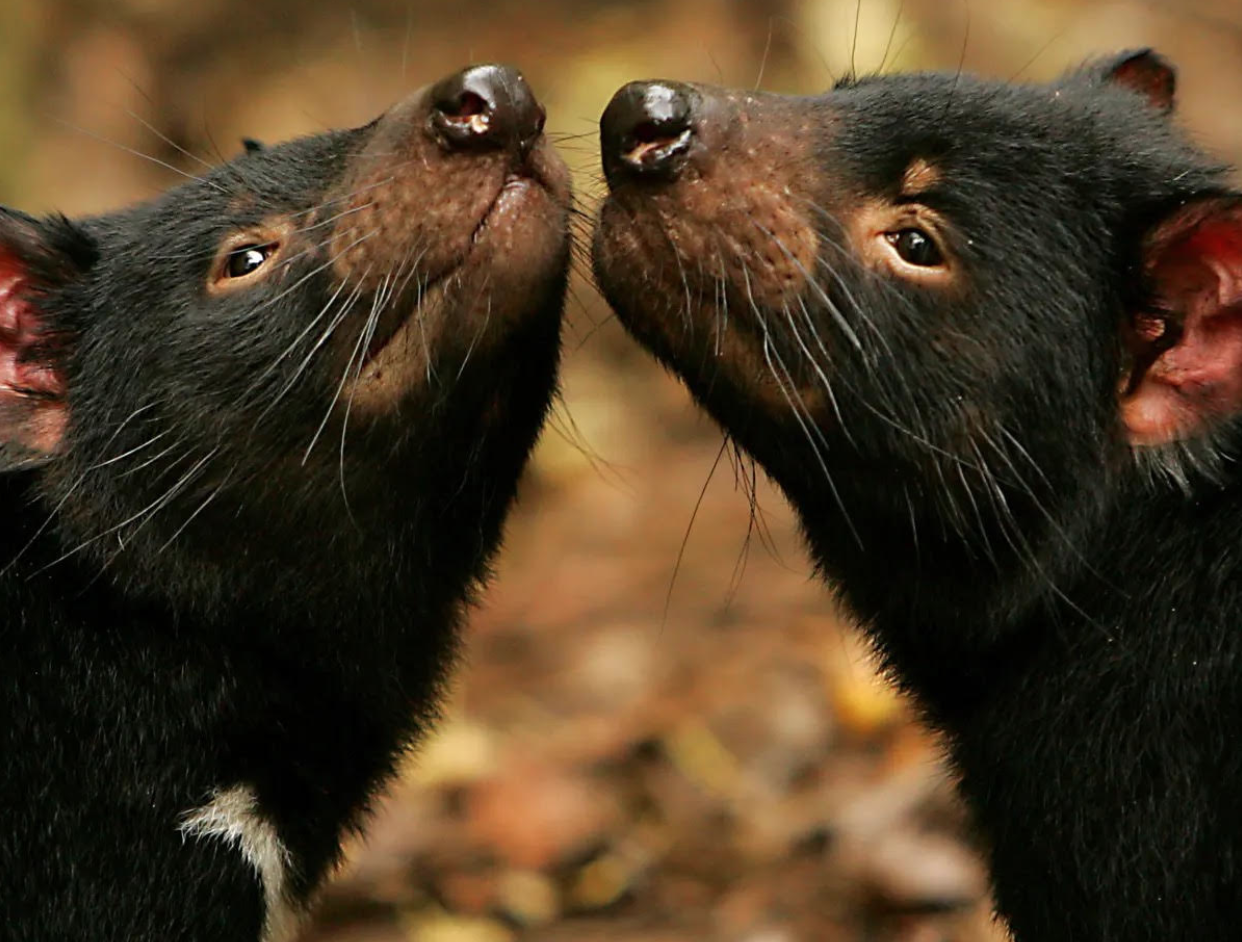These little devils have a bad reputation as vicious, bloodthirsty and short-tempered animals. They are often feared and people forget how in need they really are. The largest carnivorous marsupial alive is the Tasmanian devil, once spanning around all of Australia, it now inhabits Tasmania, and specifically the coastal scrublands and forests. It is a nocturnal animal, spending its days in logs, holes, or burrows, and preferes tracking rather than hunting. Meaning, they will feed on carcasses, including the bones, hair, organs and muscles of the animal. If they do resort to hunting they usually target small animals, including birds, frogs, and insects.
The Tasmanian devil can grow up to 30 inches and weigh up to about 4kg, which is the size of a small dog. Although they can live up to 8 years, in the wild they usually do not survive past 5 years. Despite its name and the usual representation of the animal, such as the lunatic representation of Taz from Looney Tunes, the animal is actually scared of people and extremely shy. However, it will viciously attack, release growls and disturbing screeches when threatened, especially while protecting a female or food. Tasmanian devils also have one of the strongest bites of all mammals, making them dangerous when provoked.
Despite having inhabited the majority of Australia, the animal became extinct after the introduction of dingos on the continent. Soon after, when the Europeans settled Australia and Tasmania, they began hunting the marsupial, believing it was a pest and caused the decrease in livestock. On one hand, the Tasmanian devil is unlikely to be the cause of sheep and livestock dying. On the other hand, the devil will target chickens and already dead livestock. Despite this, the huge persecution of the animal in the 1800s led the Tasmanian devil to become endangered; in 1941, the government proclaimed it a protected species and the hunting was seized.
Later, an unsuspected threat was a new, cataclisting disease, first observed in the mid 1990s. This disease, called the devil facial tumor disease (DFTD), is a rapidly spreading condition. The rare, contagious cancer causes large lumps to form around the animal’s mouth and head, restricting the animal from eating. With these lumps, the animal in the wild is left to starve to death. DFTD caused the newly restored population to drop from 150 thousand in 1996 to mere 20 thousand in 2007, labeling the animal as endangered by the International Union for the Conservation of Nature. Since then, the animal has been protected in Australia, and in 2003 the Save the Tasmanian Devil Program was launched, in order to advocate and restore the population.
There is still hope to save the marsupials. In 2015, Menna Jones, an expert at the University of Tasmania, began observing the animals adapting to the disease. She said, “We’ve seen seven, possibly eight animals whose tumors have regressed,” and furthermore claimed that, “The patterns we are seeing give hope.” With this new aspiration, researchers have been working towards making a vaccine, which would help the Tasmanian devils to decrease the spread of the disease and to increase their population. These animals have been battling near extinction for centuries, majorly because of human activity so the knowledge and the spread of the word would help them restore their numbers and finally be able to thrive. The ecosystem needs them: due to their important role in eating the sick and dead animals, they provide the control of feral cats in Tasmania and help protect some of the native species, particularly birds. By saving the Tasmanian devil people would be saving one of the most biodiverse, wild, and exotic ecosystems in the world. “I will argue that every scrap of biological diversity is priceless, to be learned and cherished, and never to be surrendered without a struggle.” – Edward O. Wilson

